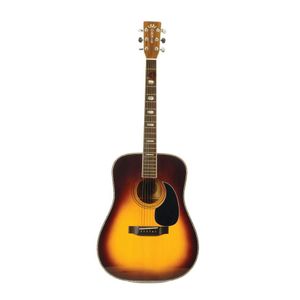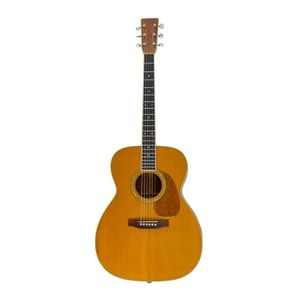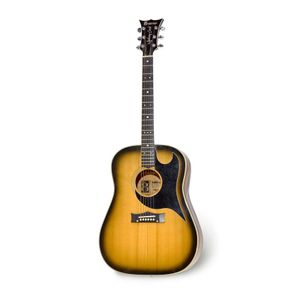1960s Johnny Cash G50 Acoustic Guitar Owned by Russell Crowe
You must be a subscriber, and be logged in to view price and dealer details.
Subscribe Now to view actual auction price for this item
When you subscribe, you have the option of setting the currency in which to display prices to $Au, $US, $NZ or Stg.
- Rosewood - A dense timber that varies in shade to very light brown to almost black. When rosewood is cut and sanded the colour of the timber will turn black, and after polishing and exposure to daylight, the surface will gradually lighten over time to light brown with black streaks.
The name comes from the odour emanating from the timber when it is planed, sanded or cut.
Rosewood was very popular for use in Victorian furniture in the second half of the 19th century, and at that time most of the rosewood was imported from Brazil. However it also grows in India and Indonesia.
It is used in the sold for chairs and table legs, but for carcase furniture such as side cabinets and bookcases, and for table tops it is always used as a veneer. - Maple - Maple, native to North America, is a dense heavy timber from light to yellow-brown in colour. It has very little distincive graining unless it is one of the variants such as birds-eye maple or burr maple, so was not used extensively for furniture in 18th and 19th century, where cabinetmakers and designers preferred timbers with more distinctive features such as mahogany, walnut, rosewood and oak.
Birds-eye maple has a seres of small spots linked by undulating lines in the grain, is highly sough and is used as a decorative veneer. Burr maple has larger and irregular grain swirls than birds-eye maple. - Circa - A Latin term meaning 'about', often used in the antique trade to give an approximate date for the piece, usually considered to be five years on either side of the circa year. Thus, circa 1900 means the piece was made about 1900, probably between 1895 and 1905. The expression is sometimes abbreviated to c.1900.
This item has been included into following indexes:
Visually similar items

A Maton EBG808C small body acoustic/electric guitar, Australian made, serial number 2181 (1003), natural satin finish, selected Queensland maple neck, 6 mm pearl dot inlays, 'AA Select' solid Sitka spruce top, select Queensland maple back and sides, scallo

A T.F. Morris W-50 acoustic guitar, an exact copy of the Martin D-45, the rosewood fingerboard with inlaid shell detail, mahogany and satinwood body, the head marked 'Morris 011514'; complete with hard case.

An Alvarez DY80 twelve-string acoustic/electric guitar, 1987, Japanese made, serial number 72821, printed maker's label to interior inscribed with model and serial numbers, solid spruce top, solid bound burled mahogany body, gloss lacquer finish, twenty fr

A Martin M-38 acoustic guitar, 1979, American made, serial number 419710, uncommon 0000-14 fret sizing, natural gloss finish, solid spruce top, solid Indian rosewood back and sides, ebony fretboard, mahogany neck, rosewood bridge, tortoiseshell pickguard,
